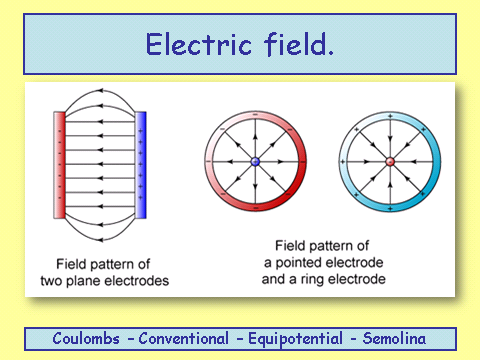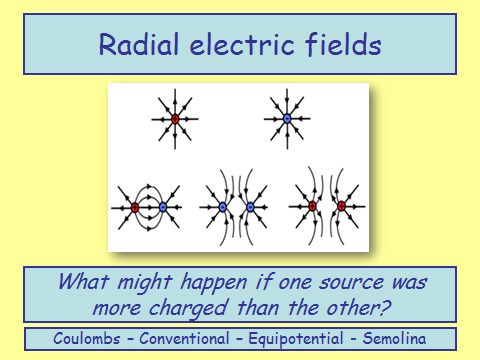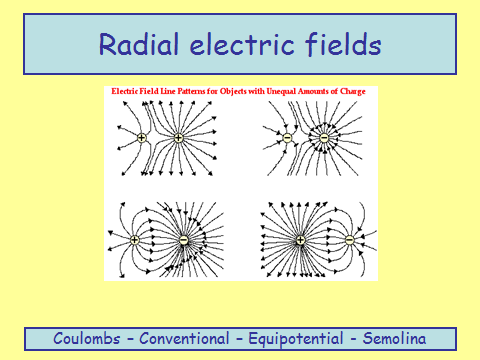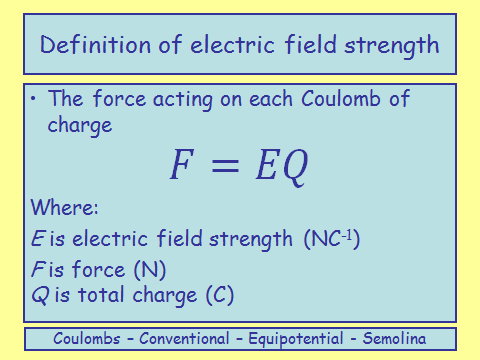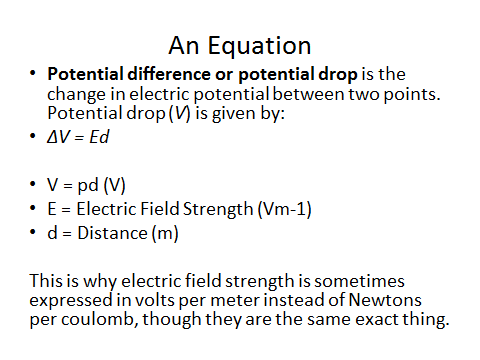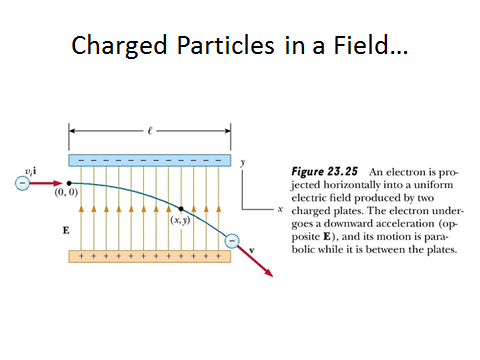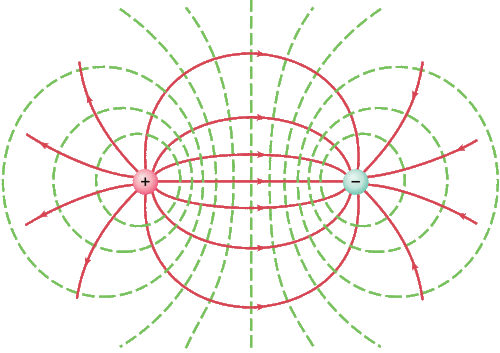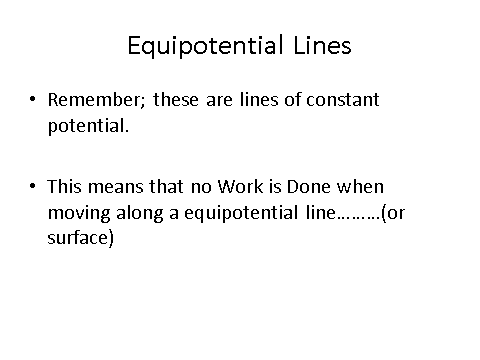Electric Fields
Coulomb’s Law
Electric Force
Coulomb’s law states that the electric force is directly proportional to the product of the charges and inversely proportional to the squared distance between them.
__F __= Force (N)
ε0= Permittivity of free space
__Q __= Charge of one object (C)
q = Charge of second object (C)
__r __= Distance between them (m)
The permittivity of free space is a measure of how well a field permeates, or spreads throughout, a region. In this case we are going to treat the permittivity of air as being equal as that of a vacuum (free space).
Electric Field Strength
Drawing Electric Fields
Notice the direction of the field lines. They are pointing from positive and going to the negative plate.
If one source was more charged and therefore had a larger electric field, the points at which the resultant force is zero would be shifted towards the weaker charge.
Electric Field Strength
Work Done
Moving Charges
Notice that the shape of the trajectory is parabolic.
Electric Field Strength 2
The magnitude of the electric field strength is similar to that of the gravitational field in design;
Electric Potential
Electric potential works the same as gravitational potential. It is the work done when moving an object from infinity to a point in the field.
Similarly electric potential difference is the work done in moving a charge from one point to another point in an electric field.
Work Done
Yes - this is similar to gravitational work done.
Equipotential Surfaces
The dotted green lines are the lines of equipotential.
Electric Potential and Electric Field Strength
Electric potential and electric field strength are related by the following relation:

